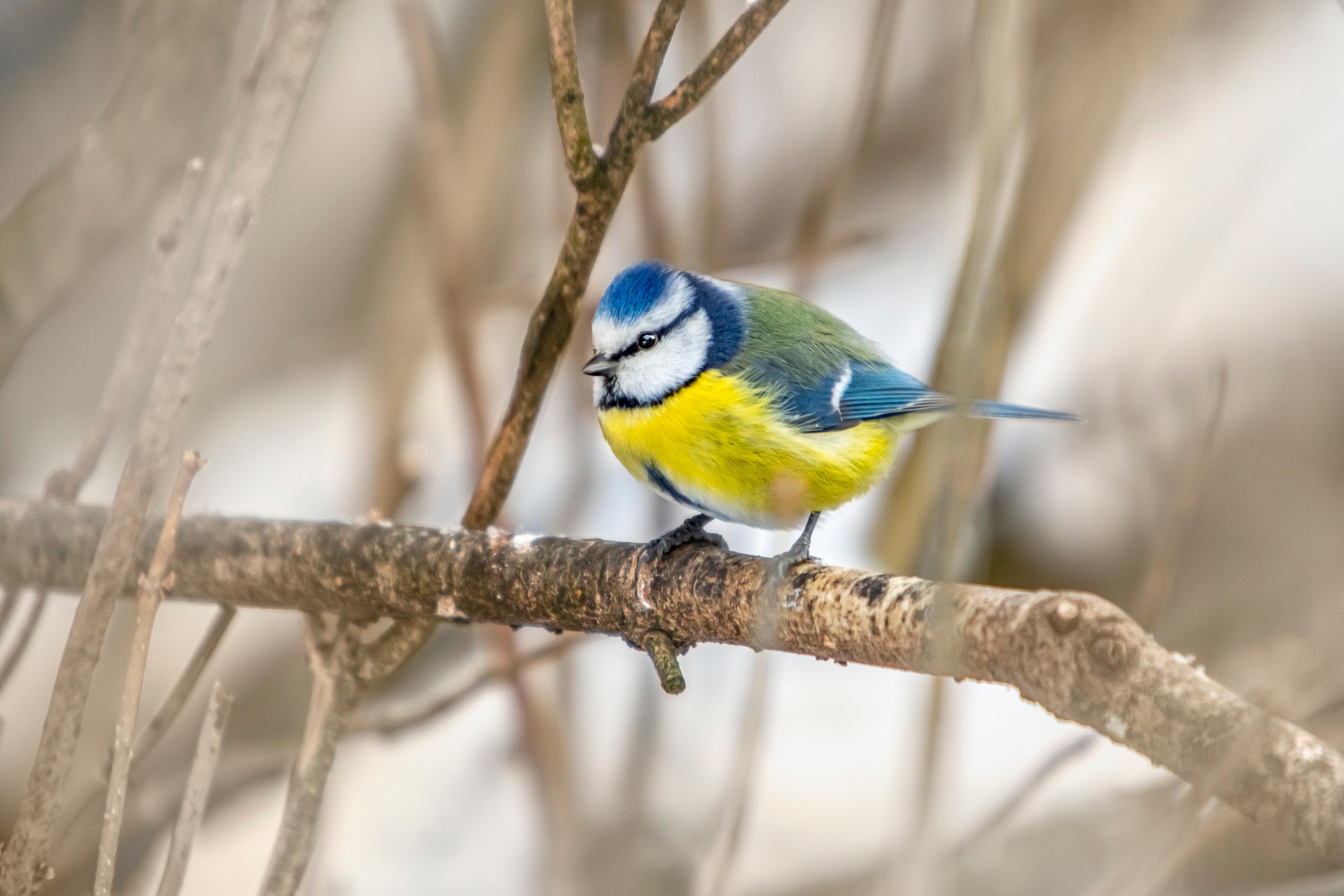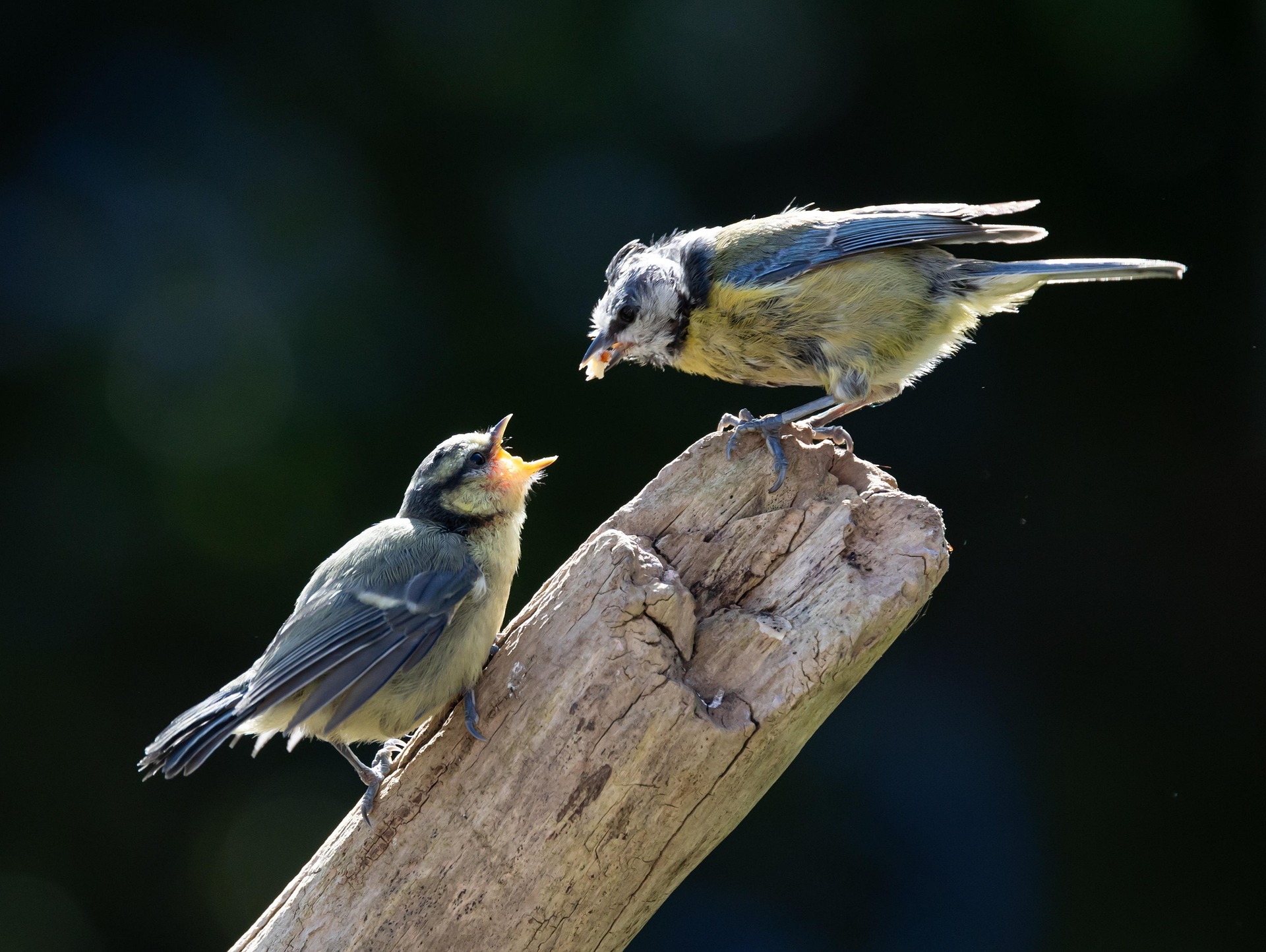The Eurasian Blue Tit is a resident bird species that occurs across most of Europe and can be seen throughout Turkey year-round. It is less frequently encountered in Eastern and Southeastern Anatolia as well as around Konya. Due to its wide distribution and abundance, it is one of the most familiar songbirds in the region.
Morphological Characteristics
The Eurasian Blue Tit is a small-sized songbird. Its crown, tail, and wings are bright blue, while its back is green and its underparts are entirely yellow. The forehead and cheeks are white, and a narrow bluish-black band extends from the eye and beak area toward the nape. A fine dark gray line runs down the center of the chest, and there is also a black band between the beak and the chest. When excited, the short crest on the back of its head becomes raised. The legs are grayish-black. Males and females look very similar. Juveniles have yellowish cheeks instead of white, less distinct head markings, and overall paler plumage. The species sometimes moves around in small groups.

Eurasian Blue Tit (pixabay)
Distribution and Habitat
The Eurasian Blue Tit has a wide distribution across most of Europe and is a resident species observed throughout Turkey all year round. It is less commonly seen in Eastern and Southeastern Anatolia as well as in the Konya region. The species is especially abundant in deciduous forests, while it is less numerous in coniferous forests. In addition to these habitats, it can also be found in wooded areas, groves, orchards, olive groves, parks, and urban gardens. During the winter months, it may also appear in reed beds. For breeding, it prefers mixed forests with dense oak and shrub cover, as well as fruit orchards, and typically nests in tree cavities or wall crevices.
Vocalization
The Eurasian Blue Tit is easily recognized by its high-pitched and lively song. It produces a variety of chirps and calls, with a song generally composed of short, repetitive, and broken notes. These vocalizations serve various behavioral functions such as communication, territorial defense, and mate attraction. The species has a rich vocal repertoire and is one of the most frequently heard and distinctive bird voices in its habitat.
Voice (xeno-cento)
Breeding
The breeding season of the Eurasian Blue Tit lasts from April to the end of June. The nest is built by the female and is usually a cup-shaped structure lined with moss, dry grass, fine bark pieces, plant fibers, leaves, animal hair, and feathers. Nests are typically found in tree cavities, gaps in poles, or artificial nest boxes. In Europe, clutch size usually ranges from seven to thirteen eggs. Incubation and the care of the young are carried out mainly by the female.
Feeding
The feeding habits of the Eurasian Blue Tit vary seasonally. Its main food sources are small insects, insect larvae, and spiders. It also consumes fruit, seeds, pollen, and nectar. The bird generally forages among tree branches and leaves but may also feed on the ground during winter when food becomes scarce. This dietary diversity plays an important role in the species’ ability to adapt to different habitats.

Feeding (pixabay)
Conservation Status
The Eurasian Blue Tit has a very wide distribution range and a large overall population. The total number of individuals in Europe is estimated to be between 59.7 and 95.1 million, representing approximately 95% of the global population. The population is generally considered stable. Therefore, the species does not meet any of the threat criteria at the global level and is classified as “Least Concern” according to the IUCN Red List.
The species is listed in Appendix II of the Bern Convention and is capable of surviving harsh winter conditions, largely thanks to the food provided at bird feeders during this season. At present, the Eurasian Blue Tit does not require any specific conservation measures.


